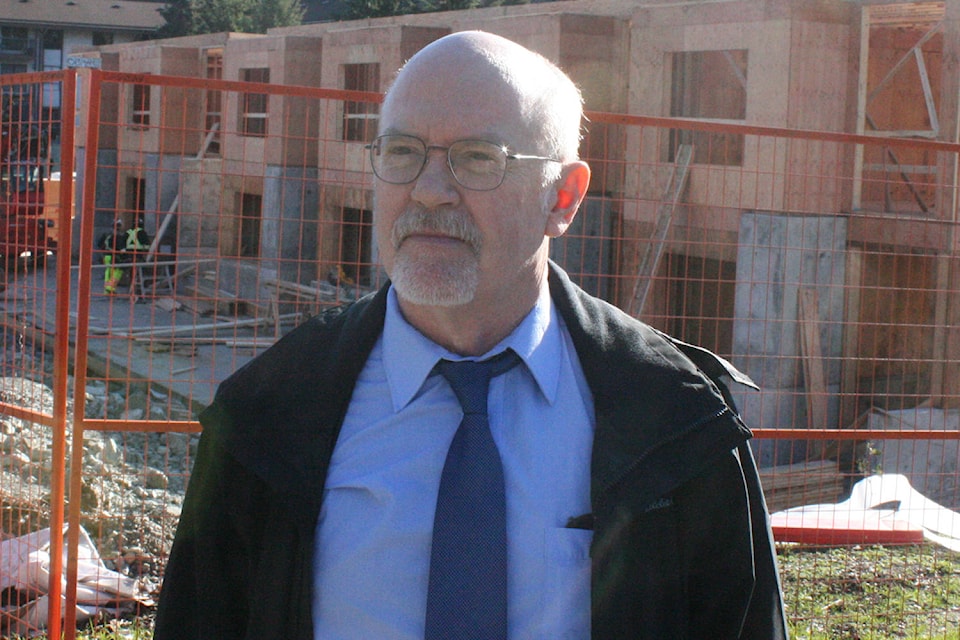The head of the association representing home builders in the Greater Victoria region says the municipality runs the risk of alienating the industry and undermining housing affordability if it pushes ahead with new charges.
“There are already very good developers and builders that would rather not do business in Saanich if it can be avoided due to costs, obstructions and delays,” said Casey Edge, executive director of the Victoria Residential Builders Association (VRBA) in an interview.
He made these comments as Saanich prepares to present to the public new development cost charges (DDCs) Monday during council’s committee-of-the-whole meeting. The municipality defines development cost charges as fees collected from land developers on a user pay to fund the cost of growth-related infrastructure such as sanitary sewers, transportation, and storm drainage as well as parks.
“Saanich is proposing to charge one of the highest DCC fees for new housing in the CRD while they have a history of the slowest most challenging development processes, already a significant cost to new homebuyers,” said Edge, who has also been critical of Saanich’s inspection regime and proposed new building code.
If the charges go through as proposed, it sends the message that Saanich considers housing first a source of revenue and affordability an “afterthought,” said Edge.
Perhaps anticipating criticism, a staff report from Valla Tinney, director of finance and Harley Machielse, director of engineering, finds that the rates are “reasonable” when compared to other municipalities across the province.
“Within the [Capital Regional District] it is difficult to compare fees due to the varying sizes of municipalities and maturity of development cost charges,” they write. “However, if one includes other development related charges, the proposed fees are considered in the middle range compared to cities such as Victoria and Langford.”
Looking at some specific numbers, Saanich’s proposed development cost charge for a single residential home is $16,360. Langford’s rate is $13,579, while Victoria’s rate is $6,558. Proposed charges for a ten-lot subdivision, however, would see Saanich be more affordable than Langford - $163,600 compared to $264,996. Victoria’s rate is $65,825.
Saanich would also came ahead of Langford when it comes to multifamily developments. A six-storey mixed use building with five storeys of residential units for a total of 75 units and a commercial ground floor of just over 1,000 square-metres would have development cost charges of $779,084. Langford’s rate? $1.27 million. Victoria’s rate, however, comes in significantly below both Saanich and Langford at $273,744.
Saanich’s proposed commercial and industrial rates would also remain above the respective rates for Langford and Victoria.
Overall, Saanich forecasts 8,000 new units over the next 20 years with 30 per cent falling into the category of single-detached, the rest in multi-family housing — the very area where Saanich would have higher development charges than Victoria. The idea of charging more for multi-family housing unit could also discourage builders to build such units, thereby threatening to undermine Saanich’s long-term goal of increasing density through mixed-use developments.
Saanich, after considerable lobbying from the public, including community associations, launched a two-phase process to review and revise the charges in light of development pressures and administrative complexities.
Prior to the first phase of the project, Saanich charged area-specific development charges for water, sewers, roads and drainage in 12 separate areas. Saanich has since consolidated this number among other changes. The second phase now underway now tackles the rates themselves with Saanich planning a second round of industry consultations following an initial round in March 2018.
Edge said his association will continue to lobby for lower rates. “We have already expressed our concerns that Saanich is posting million dollar surpluses from unfair inspection fees,” he said. “VRBA will be bringing these and other issues to Saanich during the DCC consultation.”
